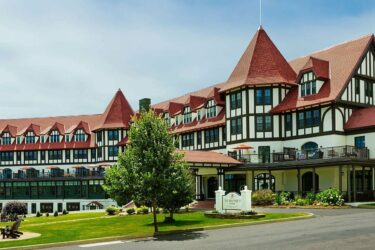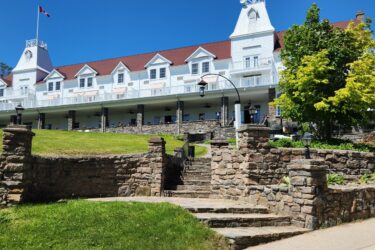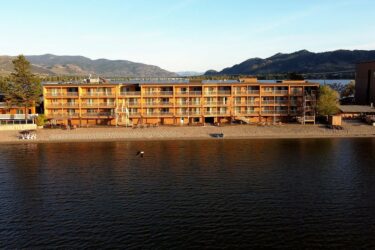
InnVest Hotels acquires The Algonquin Resort St. Andrews by‑the‑Sea, Autograph Collection and The Algonquin Golf Course
InnVest Hotels has acquired The Algonquin Resort St. Andrews by-the-Sea, Autograph Collection and The Algonquin Golf Course.
TORONTO — Colliers documented the industry’s collapse and recovery in its Q2 2020 Hotel INNvestment Canada Report. CLN talked to Robin McLuskie about recovery, provincial, international trends and the surprising nature of Q2 transactions.
TORONTO — Colliers documented the industry’s collapse and recovery in its Q2 2020 Hotel INNvestment Canada Report. CLN talked to Robin McLuskie about recovery, provincial, international trends and the surprising nature of Q2 transactions.
It has been roughly six months since COVID-19 emerged, growing into a global pandemic that resulted in a sudden stop in most global travel trends as we progressed through the first quarter, Colliers reported in its Q2 2020 Hotel INNvestment Canada Report.
Q2 transaction volume totalled $200 million from the sale of 12 hotels, bringing year-to-date June 2020 volume to nearly $500 million, compared to $830 million for the same period in 2019. (Transactions in Q1 2020 totalled $269 million compared to $666 million in Q1 2019.)
“It was the lowest quarterly volume since the global financial crisis,” Robin McLuskie, managing director, Hotels told CLN. “In fact, it never reached that low in 2007-2008. Canadian hotel transaction activity year-to-date (YTD) June 2008 totalled $540 million with 47 hotel sales reported for the period, so it was slightly higher back then.”
For this quarter, BC Housing took up $107.9M (54 per cent of the quarter volume). “Without those conversion sales, the market would have been even more muted,” McLuskie said. “However, it’s really not that surprising that transaction activity halted. The buy/sell gap is too wide right now. We are living an unprecedented situation in recent history and the hotel sector is one of the most affected by the current crisis. Volatility in property valuations is expected through year-end and until there is more confidence and stability in the market, we don’t foresee a lot of trading activity like we have in the recent past.
The second quarter of 2020 saw a spike in hotel sales for conversion to alternate use, almost entirely driven by BC Housing to shelter vulnerable populations during the covid-19 outbreak.
“While we have seen alternate use acquisitions throughout the past cycle, hotel conversions to specialized uses such as student and seniors housing can be challenging given sector requirements,” McLuskie said. “For perspective, approximately five per cent of transactions over the past decade have been acquired for alternate use. Given different valuation methodologies for these acquisitions, sellers of well-located older properties may benefit from this trend where the value for an alternate use can exceed its value as a hotel.”
“We anticipate the transaction market will see an uptick in listings during the second half of 2020 and into 2021 from both lender-driven sales and traditional sales as owners rationalize their portfolios,” said McLuskie. “While we do not expect widespread ‘fire sales’ to become a meaningful part of transaction activity, there will undoubtedly be some distressed sales from challenged assets and markets pre-covid 19, particularly tertiary locations in Alberta and Saskatchewan. This past cycle was among the most profitable periods for hotel owners, putting many in a strong position to manage the downturn with insulation from comparatively conservative market lending parameters versus the U.S.”
Key metrics slowly on the rise
Since hitting historical lows of 12 per cent in early April, hotel operating fundamentals for the most part have continued to improve each week. National occupancy sat in the low teens for much of the spring, however the summer has proved to be a lifeline for hotel owners, particularly those with resorts or assets in other drive-to destinations. STR recently reported a much-improved occupancy level of 38.4 per cent for the week ending August 1st, however still pacing 49 per cent behind the same time last year. The fall and winter months are likely to be more challenging as domestic leisure travel from the summer season subsides.
Based on data from STR, ADR for the second quarter was $106.66, declining 36.4 per cent from Q2 2019 levels. “We expect ADR will take longer to recover to peak levels than occupancy given the significance of rate declines to date,” McLuskie said. “Learning from past cycles, we encourage owners to maintain their rates until stronger demand for accommodations resumes.”
Based on data from STR, Canada’s RevPAR hit a low of $12.17 in early April, representing a staggering 87.6 per cent decline from the same period last year. Since then, material rebounds in both occupancy and rate levels have driven improved RevPAR metrics with the week ending August 1st hitting $49.86, although still down a significant 63.8 per cent year over year.
According to STR, Q2 national occupancy declined 71.4 per cent year-over-year to 19.4 per cent while ADR declined 36.4 per cent to $106.66, resulting in a RevPAR decline of 81.8 per cent to $20.72.
Process of opening borders will be long and piecemeal
Most provinces began relaxing inter-provincial and regional travel restrictions beginning in late May, although all continue to discourage non-essential travel between provinces, except for the Atlantic Bubble, the Colliers Q2 2020 Hotel INNvestment Canada Report noted. While many jurisdictions are imposing a strict 14-day self isolation period, Canada’s three territories (Yukon, Northwest Territories and Nunavut) require a quarantine at an approved facilities in certain cities to mitigate spread in their local communities.
“Provincial and Interprovincial travel restrictions continue to change in response to COVID infections within and outside of each province,” said McLuskie. “Since the early innings of the virus outbreak in mid-March, domestic travel conditions have generally relaxed, however; there is possibility for resumption of restrictions with a potential second wave in the fall/winter months. Regional policies such as the Atlantic Bubble are an interesting concept and for the most part, hotel operating fundamentals in these provinces has improved since being enacted in early July. Time will tell if this strategy may be suitable for other regions in Canada.
YOY travel statistics are dramatic
For the first time since Canada’s confederation in 1867, the joint Canadian/U.S. land border closed to all but essential crossings effective March 21. The reopening has been extended four times now, to August 21st at the earliest, Colliers reported.
In 2019, 16.75 million non-residents crossed into Canada by car, representing 67 per cent of total travel to Canada by U.S. citizens. For the month of April 2020, just 46,596 per cent non-residents crossed into Canada, down 97 per cent year-over-year from 1.1 million, according to Statistics Canada.
“The Canada-US border is the longest demilitarized border in the world and our economic and cultural ties run deep. Over 75 per cent of non-residents arriving to Canada are from the U.S., demonstrating their importance to our lodging and tourism industries. Given rapidly growing covid infections south of the border and variations between regions, it will be a challenging process to resume normal border crossing activity. Recent surveys indicate many Canadians are not in a rush for the border to open until the virus is better contained. Although currently open to essential travel, we anticipate border crossing restrictions will be lifted slowly with tourism travel to follow once containment and testing policies are in-place.”
While replacing international travel with domestic is a necessity during these unprecedented times, international visitors spent an average of $1,047 per month as compared to $244 per trip for domestic visitors, according to the Tourism Industry Association of Canada (TIAC). “While domestic tourism is the industry’s bread and butter, every 1 per cent increase in international visitors to Canada means an additional $817M export revenues for the economy,” TIAC reported recently.
Information for this article was prepared by Robin McLuskie, Managing Director, Hotels, and Fraser Macdonald, Director, Hotels, at Colliers.
Colliers continues to monitor market changes weekly and anticipates having more of its popular webinars in the fall as new information and trends emerge focusing on investor sentiment, debt market conditions and operational challenges as we enter a potential second wave.
Download the Colliers report:https://files.colliershub.com/Documents/Uploads/Hotel-INNvestment-Canada-Report-Q2-2020.pdf



InnVest Hotels has acquired The Algonquin Resort St. Andrews by-the-Sea, Autograph Collection and The Algonquin Golf Course.

The new owners of the famed Windermere House hotel and resort on Muskoka’s Lake Rosseau intend to revitalize the building and its amenities while preserving the property’s historical integrity.

Proactive Hospitality has acquired the Coast Osoyoos Beach Hotel, B.C. CFO Capital arranged acquisition financing for the deal.

Tribute Portfolio – part of Marriott Bonvoy's extraordinary portfolio of 31 hotel brands – continues to grow its global family of characterful hotels with Honeyrose Hotel Montreal, a Tribute Portfolio Hotel, the brand's…